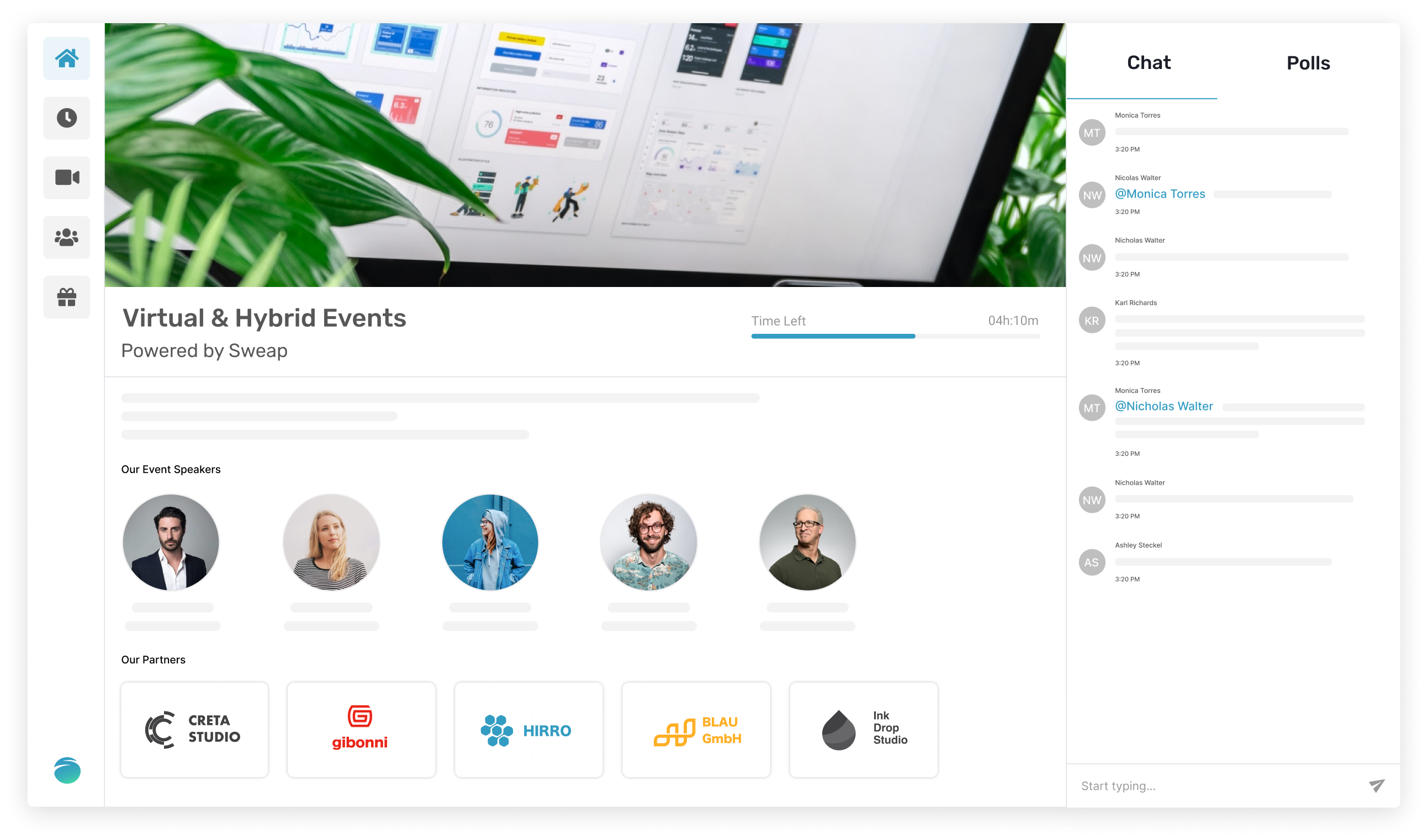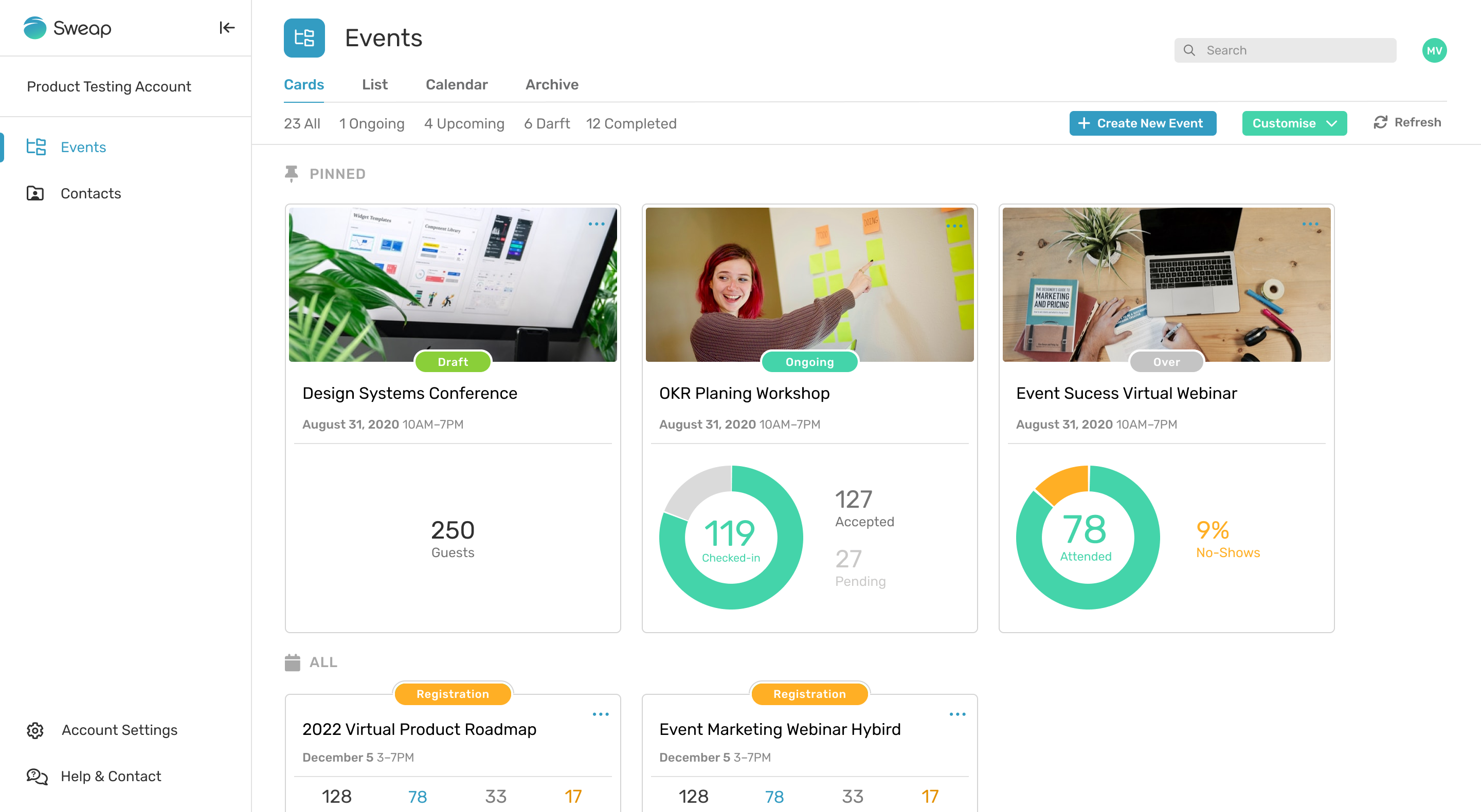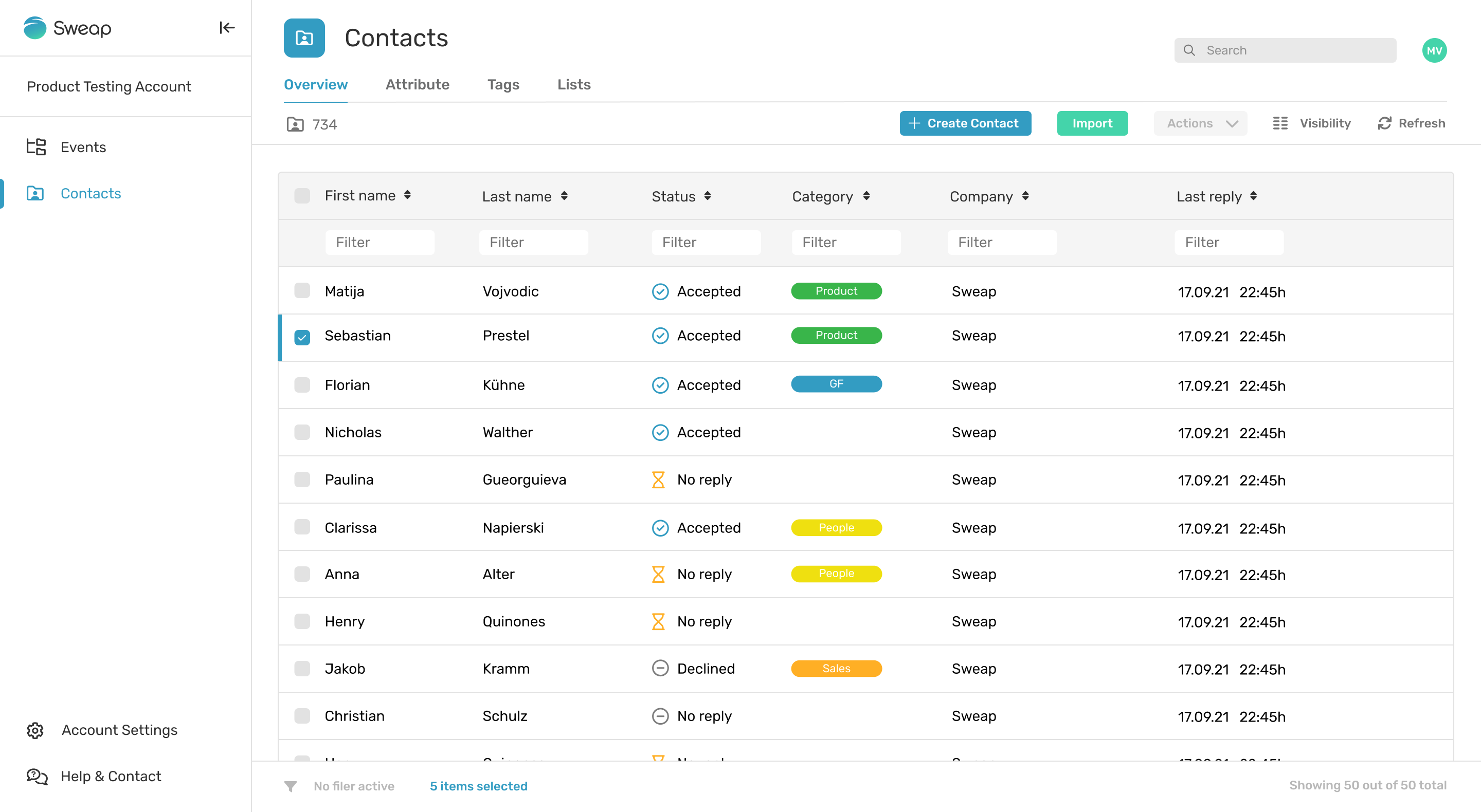Sweap is end-to-end SaaS guest-management software that helps companies to reduce expenditure, measure performance and gain rich insights to ensure successful and high-quality events.
The previous version of Sweap ran on Vaadin 8 (and GWT). To keep up with new challenges in the rapidly-changing event management space, in 2018 it was decided that Sweap could benefit from a migration to the completely-rewritten Vaadin 14. This customer story takes a behind-the-scenes look at the migration process from Vaadin 8 to Vaadin 14

What is Sweap?
Sweap is web-based, SaaS guest-management software. It was originally developed to overcome the common hurdles in event management/organization, including but not limited to:
- Diverse guest invitation workflows.
- Communication with the guests (emails, calls, SMS, even faxes).
- Collecting responses in a spreadsheet.
- Gathering feedback.
Sweap digitizes and consolidates the entire event-organization process on a single platform—from invitations to replies, from check-ins to post-event evaluations. It can offer event organizers time and resource savings of up to 75%.
The first version of Sweap was developed with Vaadin 7 with a Spring Boot backend. It was eventually migrated to Vaadin 8, where it remained for several years.
Staying relevant in a rapidly-changing industry through innovation
The event management space is a constantly-shifting one, driven by market forces and ever changing trends. In 2018, it became clear that Sweap needed significant enhancement, in order to keep up with changes in both the industry and in UI design. The client’s pain points included:
- Lack of mobile optimization.
- Sub-optimal, lengthy click paths.
- A noticeable rise in new-feature requests from customers.
- Desire to move on from the rapidly-ageing Google Web Toolkit (which was used as a foundation for older Vaadin versions).
- Ageing aesthetics and cluttered views that did not reflect the modern, minimalist sensibilities of Sweap's current and prospective customers.
In addition to a technology update, it was recognized that the application needed a face-lift, both from a look-and-feel and a user-experience perspective.
They also wished to retain the following benefits afforded by Vaadin:
- Component-based UI model.
- Pure Java-based application, which works well with their predominantly Java-centric development team.
- A robust, extensible design system (implemented using Web Components in Vaadin 14) that could be used via Java binding, or directly with any JavaScript-based stacks used for smaller projects.
After a thorough evaluation of the available technology options, the Sweap developers opted to migrate to Vaadin 14, the latest LTS version. Vaadin’s reliance on the widely-used Web Components standards was a major driver behind the decision, as it ensures native support in all major evergreen browsers for an extended period of time.

The project: A view-by-view migration using MPR
The Sweap developers opted for a phased, view-by-view migration of their software using Vaadin’s multi-platform runtime (MPR) tool. MPR allows legacy Vaadin applications to run inside a recent/the latest LTS version in a “compatibility mode” of sorts. This allows an application to be migrated in a piecemeal fashion, which reduces the workload and allows costs to be spread out to suit the preferences of the developers and organization.
To mitigate the risks and ensure a successful migration, Sweap's developers also decided to seek assistance from Vaadin’s consultants. With over 20+ years of consulting experience in a wide variety of verticals, Vaadin’s services division was well-equipped to help them out.
The overall scope of the project encompassed:
- A redesign of the application’s information architecture.
- Design and implementation of a new application shell and navigation.
- Design of new UI patterns for the remainder of the UI.
- Implementation of new UI patterns for refactoring migrated views to new designs.
The migration process:
The scope of the first phase included redesigning the application’s:
- Information architecture
- Shell and navigation
- UX and visuals
The process started with a UX designer creating new visuals for the application, while simultaneously considering initial navigation improvements.
This approach yielded successful results and the migration then proceeded at full speed.
Next, the legacy Vaadin 8 application was wrapped using the multi-platform runtime (MPR) tool that allows the application to run on a single codebase. This enabled a gradual, view-by-view migration from the version 8-based Sweap application to version 14, while simultaneously creating new features that are available in version 14.
The second phase focused on the migration itself and involved rewriting some of the most critical customer-facing views. The existing architecture, as well as the look and feel, were modernized by redesigning the UI architecture and implementing new UI patterns.
The new Vaadin 14 application relies heavily on the following Vaadin UI components, among others:

The end result: A future-proof SaaS event-management application ready for anything
The migration from Vaadin 8 to Vaadin 14 was completed in 5 months. Sweap is now ready to power even larger events in the coming years.
Migration to Vaadin 14 brought major user experience improvements to Sweap. Thanks to both the technical improvements and the updated UX design implemented during the migration, the software is expected to attract an even wider customer base in the future. In addition, Sweap Development Gmbh can rest assured that Vaadin’s 15-year support and update policy for LTS versions, guarantees regular feature updates to keep the Sweap application modern, secure and looking fresh for many years to come.
At present, the Sweap platform has 800 unique users (event organizers) per month and is equipped to handle many more. In addition, the software has helped organize over 10,000 events, handled guest lists with over 4,000,000 attendees, sent more than 2,600,000 invitations, and handled over 550,000 check-ins.

